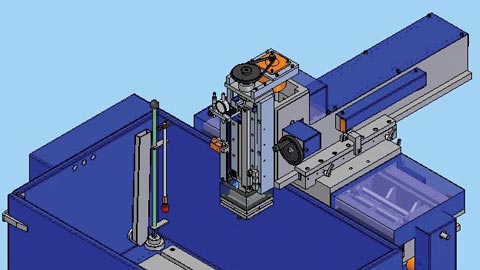Teamcenter Rapid Start to reduce design time by 25%
Teamcenter Rapid Start to reduce design time by 25%

Case Study
Industrial machinery manufacturer uses Teamcenter Rapid Start to reduce design time by 25 percent
Sparkonix
Sparkonix implements PDM quickly to help designers significantly decrease time spent searching for storing and retrieving data
Corralling data
Sparkonix India Private Limited (Sparkonix), which was established in 1968, is a leading manufacturer and exporter of electrical discharge machining (EDM) equipment. The company also produces special-purpose EDM drill machines and metal arc disintegrators, which are used to remove broken taps and drills. Furthermore, the company engineers a range of innovative solutions in steel rebar branding and handling, and construction technologies.
Sparkonix machines typically include hundreds of parts, from fabricated and machined parts to castings, sheet metal, electronics and electrical items mounted directly on mechanical assemblies. Its market is the die and mold industry and special purpose machine (SPM) and special purpose drill (SPD) EDM operators.
Sparkonix uses Solid Edge® software from product lifecycle management (PLM) specialist Siemens Digital Industries Software for computer- aided design (CAD). However, the company was finding it difficult to manage a rapidly expanding amount of design data.
“The amount of CAD data was growing and we needed to manage it better so that no unnecessary duplicates would be created,” says Anand Atole, assistant manager of Design at Sparkonix. “Being able to re-use design data to speed up work was a priority. Also, the number of users accessing data was increasing and we required control of user workflow, so we needed revision management.”
Speeding up the process
Sparkonix is in a highly competitive market, so the company needed to come up with new concepts and designs. The company was intent on improving its existing products and processes without compromising quality. Achieving this while keeping costs in mind was a big challenge, as was meeting deadlines for deliveries of customer orders and providing updates to marketing on changes to designs.
With these challenges delaying the design-to- delivery process, the company knew it needed a solution that would enable it to move significantly faster, especially with customer demand continually increasing.
Sparkonix previously had a central location for data, but it could not be easily searched. Equally frustrating, Sparkonix was unable to re-use the data. In addition, it was hard to avoid creating duplicate data, and anybody could access it. What Sparkonix wanted was total control of its design data, with ease of access, the ability to readily re-use the data and strong security.
